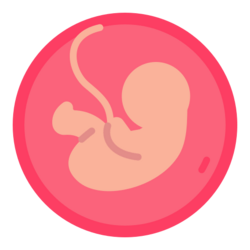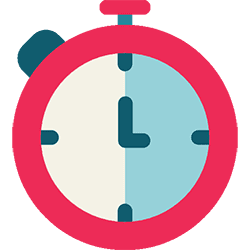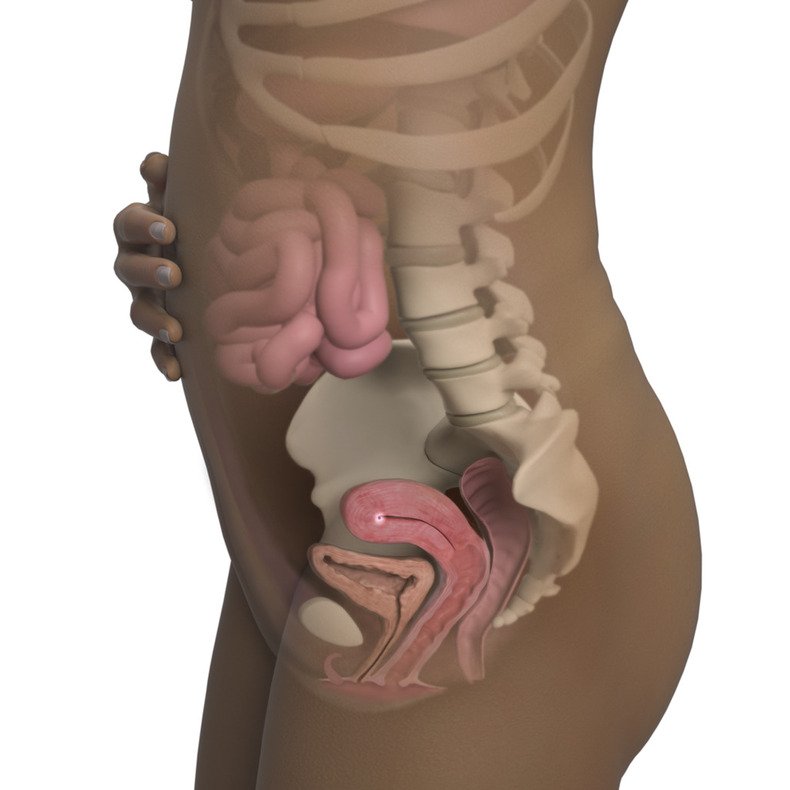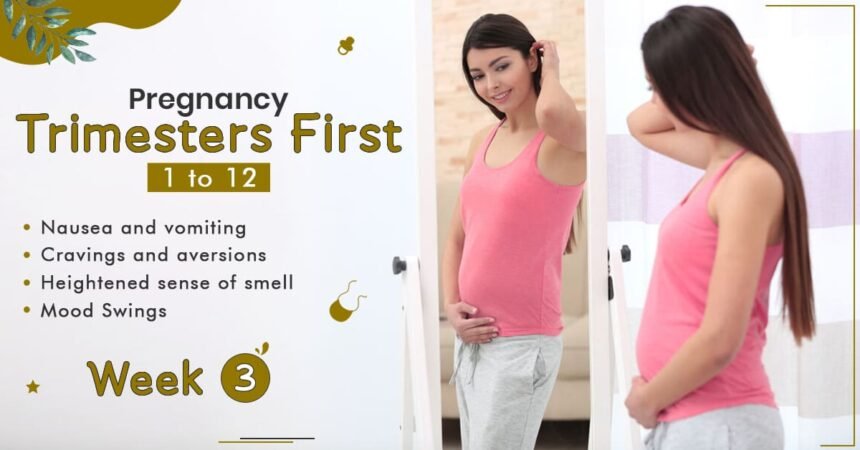In this article we will also discuss about pregnancy trimester 1 week 3 and baby development signs and symptoms.
Week 3:
This week’s highlights
When can I see if I’m pregnant?
With this week’s sign, you might be happy to be pregnant to take a look at it. A pregnancy check works by detecting the presence of a hormone known as human chorionic gonadotropin (hCG) in your urine. Most houses declare the pregnancy check to be valid even on that day, however, even then, the amount of hCG in the urine is still there. If you glance at it too quickly, it’s possible that you’ll find a false deterrental due to pregnancy or a glimpse of it or a faint line-like indistinct end restoration. If it does, take a look at it again in several days.
Implantation takes place this week
Your developing baby has crossed the fallopian tube and is starting to implant itself in the lining of your uterus. Currently, 15 to 25% of women experience implantation bleeding, which is light bleeding that occurs six to 12 days after conception. You can actually feel the pain of implantation.
Early pregnancy symptoms:
Most women don’t notice anything until they miss a period, however, it’s possible you’ll notice bloating, cramping, or learning this week. Your breasts may be extra tender than usual and you will have a heightened sense of smell, which is one of the first signs of pregnancy. So if your partner, your home, or your canines are suddenly completely different from you, thank your surging hormones.
What is the number in 3 weeks?
You are in your first month!

Children’s improvement in week 3:
Your growing child:
Your developing baby is a tiny ball of several hundred cells that can multiply and implant in the lining of your uterus. The cells inside the nucleus will develop into embryos. The cells on the surface will grow into the placenta, the pancake-shaped organ that supplies your baby with oxygen and vitamins and carries away waste.
Connecting to you
Your tiny blastocyst is taking in oxygen and vitamins (and getting rid of waste) through a primitive circulatory system. This system is made up of microscopic tunnels that connect your unborn baby to blood vessels in the wall of your uterus. The placenta will eventually take over this activity at the end of the primary trimester.
Have twins?
It’s too early to know. But it sure is still fun to see what looks like a brotherhood within WEEB this week. You can even study your chances of having twins or extras.


Implantation:
3 weeks pregnant body
Early pregnancy hormones
The cells that can form the placenta are pumping out the pregnancy hormone hCG. It tells your ovaries to stop releasing eggs and produce progesterone, which prevents your uterus from shedding its lining and its tiny passenger? As soon as you have good hCG in your urine, you can be optimistic about getting pregnant by taking a look at the final results.
Fluids are filling your uterus
Amniotic fluid is beginning to collect inside the amniotic sac. This fluid will introduce your baby within weeks and months, and it’s what happens before or after your water breaks.

Pregnancy Trimester 1 Week 3:
Pregnancy symptoms in week 3:
Not having pregnancy symptoms?
Some girls feel pregnant before the check is happy, however, most do not discover anything. When you’re signed off this week, some of it can really feel like PMS. Don’t worry if you don’t feel anything. Even at 5 weeks pregnant, few of the girls actually feel pregnant symptoms.
Fuel and inflation
The hormone progesterone relaxes muscle groups in your body, along with your digestion. These relaxed muscle groups slow down digestion, which can lead to gas and bloating and uncomfortable feelings in your gut. About half of pregnant girls become constipated sooner or later after they become pregnant. To keep problems at bay, stay hydrated and eat high-fiber foods like whole grains, fruits, and greens.
Breast pain
Many women say that the tenderness they feel is actually an exaggerated model of what their breasts actually felt like before a break. Some girls also find that their nipples become darker during pregnancy.
Recognize:
One in 4 or 5 girls discovers a small amount of identity this week. She has implantation bleeding as a result of the fertilized egg implanting inside the uterus. When you have cramping with bleeding, call your health care provider for an ectopic pregnancy as a result.
Basal body temperature remains high
If you’re charting your temperature, keep it high this week. To keep the monitor, use a basal body thermometer and take your temperature after getting up in the morning before going to bed.


Getting pregnant guidelines in week 3
Take note of your feelings
Once you’re ready to study whether or not you’re pregnant, or simply find out, it’s normal to feel more anxious than usual. If you feel confused or scared, discuss it with your partner or a trusted friend. Or, try writing down everything that’s bothering you. Journaling can enhance your emotional well-being, psychic reading abilities, and even physical well-being.
Avoid overheating:
Simmering baths are fine during pregnancy as long as they are not too hot. However, stay away from steam baths, sizzling tubs and saunas. Elevated body temperature is associated with an increased risk of neural tube defects in newborns.
Eat nutritious meals and snacks
Eat foods that support conception and pregnancy, such as fruits and vegetables, low-mercury fish, and whole grains. Choose foods high in vitamin C (such as strawberries), iron (such as poultry and spinach), and calcium (such as Greek yogurt, and pasteurized cheese). For breakfast ideas, try our 10 favorite healthy snacks for expectant moms.
Cut back on the espresso
When you are trying to conceive and when you become pregnant, counselors recommend limiting your caffeine intake. It is important to monitor your caffeine intake. Too much caffeine can affect your pregnancy and your baby. See how much caffeine is in various foods and drinks.
Increase your sleep
Relax when you can When you’re only a few months into pregnancy-related sleep disturbances, you’ll be ready for them. Create better habits around sleep and work on good sleep practices such as posture and making your bedroom a sleep sanctuary.






